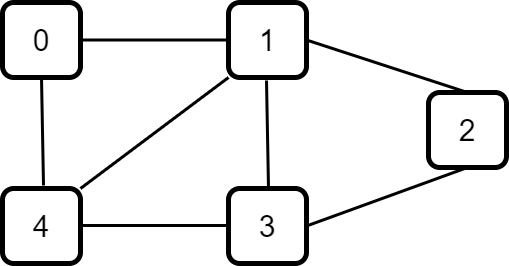To improve my writings, the blogs in research will be written in English. Feel free to give any suggestions! 😉
First of all, I would like to introduce my research area Graph Representation Learning from a high perspective. Readers can refer to GRL Book for a comprehensive understanding.
Graph (Fig. 1) is one of the most expressive data structures to describe complex systems. A graph $\mathcal{G}$ usually consists of two parts, nodes $\mathcal{V}$ and edges $\mathcal{E}$, i.e. $\mathcal{G}=(\mathcal{V},\mathcal{E})$. Nodes can be used to describe entities in the world, while edges can be used to describe the correlations between nodes. Different from some simple data structures such as texts / images / tensors which is easy to understand, graphs are more expressive, as a graph can not only tell what a thing is, but also what the correlations between this thing and other things are.

Machine Learning has a trend to become one of the most influential research topic. Inherently, machine learning can be intepreted as solving problems with statistic learning. We seek to build models that can learn from existing data and generalize to unseen data. With machine learning methods, we can achieve tremendous exciting results in many application area. However, machine learning with graphs seem to be different with traditional machine learning.
Remember that many machine learning models assume that data are i.i.d. For example, when we apply logistic regression to classify images with different labels, we assume that the label of one images cannot be affected by another image. However, this is a strong assumption of data and sometimes cannot be generalized. Fortunately, graphs can be used to describe this kind of data. Therefore, research of machine learning with graphs has a wide range of application.
However, each coin has two sides. While graphs are apparently expressive, graphs are more complicated and hard to understand. To store and operate a graph in the computer, one necessary step is to encode it into vector space, which is also known as Graph Representation Learning. Therefore, Graph Representation Learning plays an important role in Graph Learning.